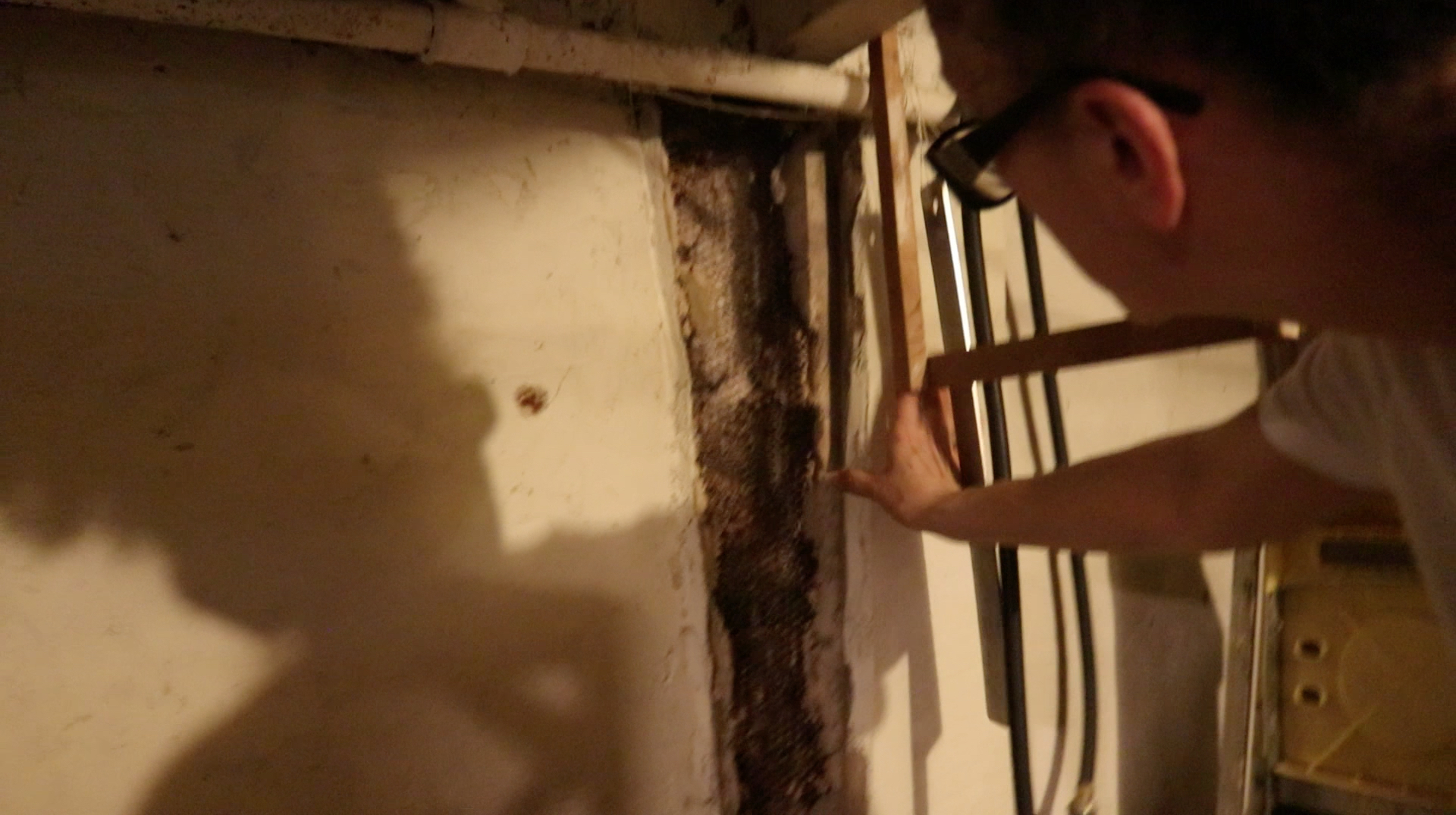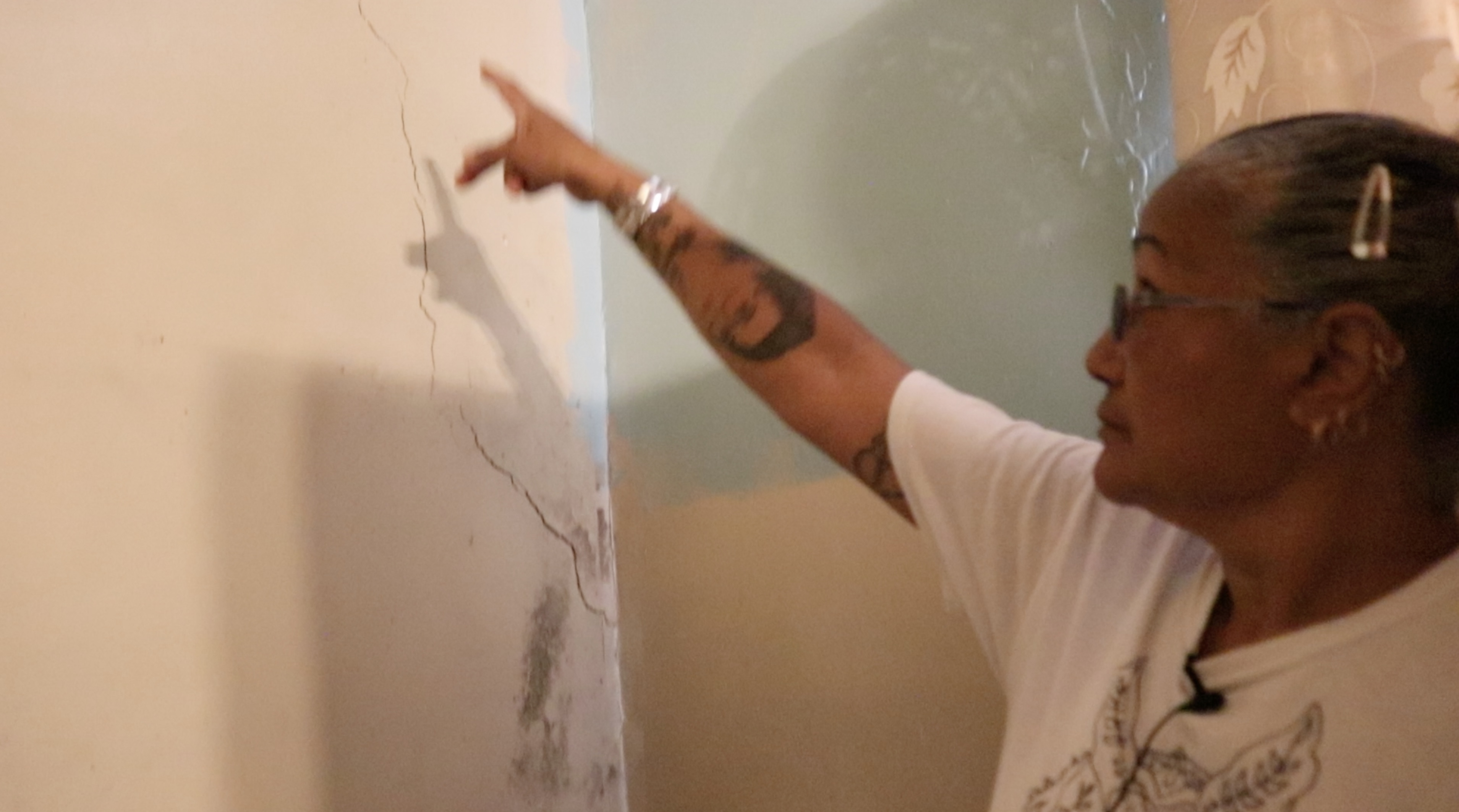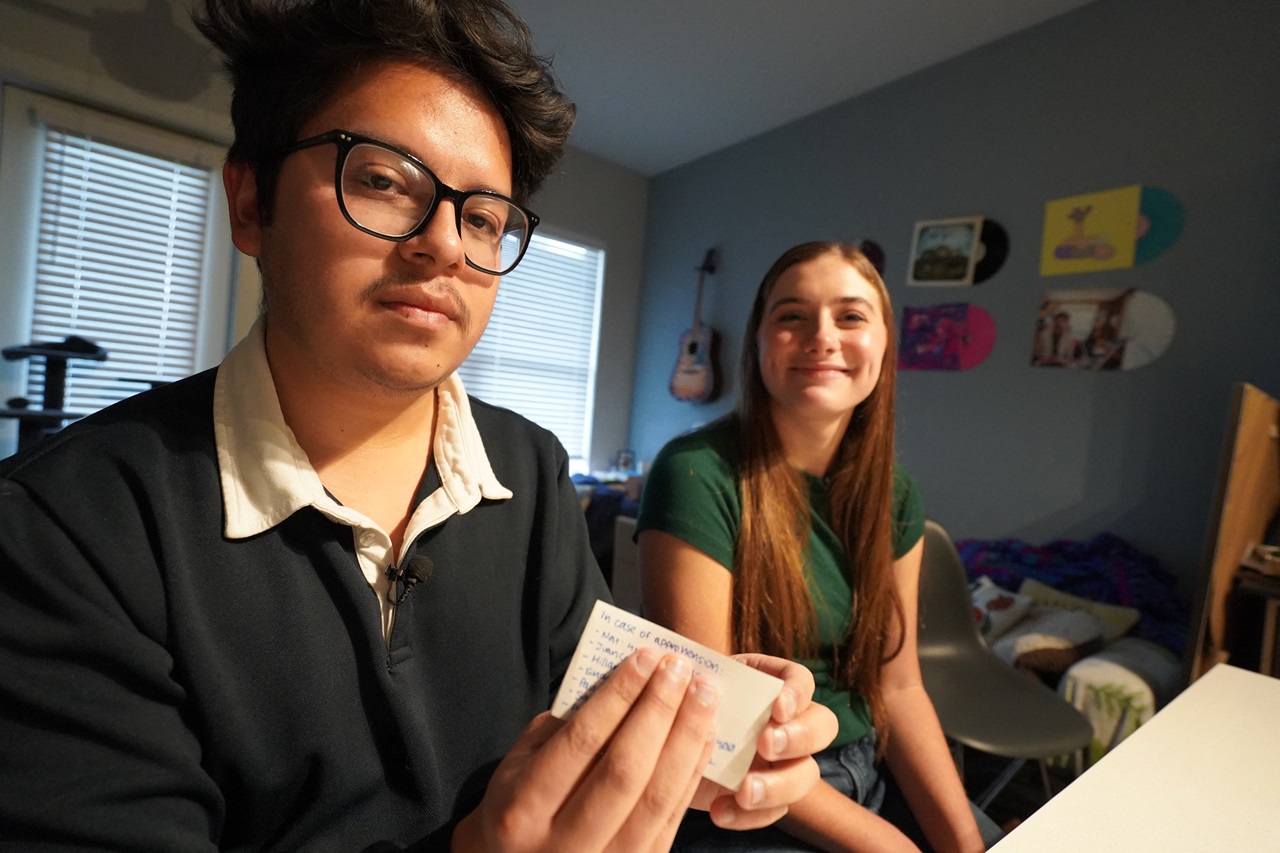
Uncertain future as Puerto Rican community faces gentrification in Norris Square, Philadelphia
Just north of Fishtown and Northern Liberties is Norris Square, a proud Puerto Rican community facing an uncertain future as gentrification takes hold.
It’s been 36 years since Carlos Rodriguez called somewhere other than Philadelphia’s Norris Square neighborhood “home.” Before he moved to his current house at 2034 Hancock Street in 2000, Rodriguez lived a block over on Palethorp Street.
Like most longtime residents in this predominantly Puerto Rican pocket of Kensington, Rodriguez knows everyone — from the woman on his current block who used to open her home to him when he was a rowdy teenager, to the longtime fishing buddy that still lives on his old street under the care of his wife and grown-up daughter.
It’s a neighborhood that welcomed Rodriguez back home in 2004 after a tour in Afghanistan and the place in which he raised his daughter, and now where she raises her children.
But it’s changing.
In the 1980s, with the neighborhood in the stranglehold of the crack epidemic and its park labeled for the needles that littered its grass, houses were sold for $1.
Now, firmly within the grasp of gentrification, it’s not uncommon to see a property valued for more than half a million.
When AL DÍA visited Norris Square over the summer, its residents pointed to everything from rising property taxes, rents and poor construction practices as reasons they see their once proud neighborhood fading in the face of wealthier newcomers.
Gentrification is not a new thing in Philadelphia, or across the country. To understand the dynamic, it helps to know how policies at both national and local levels play into its manifestation.
At the federal level some of the policies are recent.
In 2017, President Donald Trump created what’s known as “opportunity zones,” as part of the Tax Cut and Jobs Act.
“[They’re the] hottest thing going, providing massive new incentives for investment and job creation in distressed communities,” Trump said at the time while at a rally in Cincinnati.
The initiative allowed any construction within these “opportunity zones” to avoid federal taxes altogether and delay capital gain taxes for years.
It was said the policy would improve the lives of low-income families, and spark investment in distressed areas and neighborhoods nationwide.
At least, that’s how it was intended to work.
Instead, it’s become a “windfall for the rich.”
As part of the legislation, state governors identified eligible census tracts in their respective states, and Puerto Rico.
Governor Tom Wolf chose 300 in Pennsylvania — including parts of Philadelphia like Norris Square.
The scenario is well-known to Philadelphia, which saw a similar policy take form at the local level in 2000.
Back in the 2000s, Philly created a Tax abatement program under former mayor John F. Street, with the idea of encouraging new construction or property rehabilitation to “revitalize communities, retain residents, attract home and business owners, and reduce development cost for commercial residential projects.”
By exempting the value of all improvements to real estate from local taxation for 10 years.
Almost a decade into the project, as the first houses were due their 10 years, a woman named Diana Settles asked then-Mayor Michael Nutter:
“A homeowner who moves can not take the abatement along, instead it is transference to the new owner. The old owner has walked away, the new owner gets what it is left over, so know you have a $300,000- 500,000, a one million dollar property, where the person has never ever paid any taxes. He is able to walk away, if I’m reading this correctly, that’s money that the city is giving away?”
To which Nutter replied, “you are pretty much correct with many of the things you have laid out.”
However, he assured her the tax abatement program was good for the city, and despite Settle’s belief, was accessible for “everyone, not just for the rich, it’s not downtown is citywide.”
“We have made money out of this. People pay the real estate transfer tax, new ways taxes, business taxes. We made money as a result of it,” said Nutter.
His opinion mirrors that of The Philadelphia Building Industry Association, which characterized the benefits of the program as “quite substantial”.
From the standpoint of developers and politicians, that rings true: overall homebuilding activity in 2017 grew 376% and accounted for an additional $83 million from 12,477 properties with expired abatements.
Tax abatement is expected to collect an additional $169.4 million in annual real estate tax revenues by 2026. But at what cost?
The answer is not clear, but the question has prompted City Council to consider if it should keep being in place at all.
While City Council is looking to pass legislation to slowly remove tax abatement through the next 10 years, Mayor Kenney believes it has brought enough opportunities to the city to remain in place.
Both sides are trying to reach an agreement, with chamber votes taking place before the new year. Councilmembers Helen Gym and María Quiñones-Sánchez, among others, have criticized the mayor’s attitude towards the abatement.
“Embarrassing for our mayor and city to freak out about tax subsidy reform while residents are being displaced and schools crumble,” tweeted Gym.
“What would Councilman Kenney say about this?” wondered Quiñones-Sanchez in an interview with WHYY.
While City Council decides, the people are and have been caught up in the middle.

Rodriguez’s problems started in 2017, when longtime neighbor, and City Council representative for the 7th Councilman District, María Quiñones-Sánchez sold her house at 2038 Hancock Street to a new owner for $400,000.
In addition to the house at 2038 Hancock, the new owner also purchased the land in between his and Rodriguez’s house to plant a garden.
It previously served as a common space and is the site for a storm drain.
To accommodate the garden, a contractor brought in by the new owner raised the earth around the house and storm drain.
“In some spots, it’s raised as high as nine inches,” said Rodriguez.
As a result, his house now sits at the bottom of a slight incline, and acts as a collection pool for water when it rains.
To add insult to injury, Rodriguez alleges that the developer also did not install the correct-size drains on the house and thinks the excess water from the roof has damaged the storm drain in the former common space.
“It creates a waterfall that goes straight to the ground,” said Rodriguez. “And where is the water going to go?”
It goes to his property. He’s installed a makeshift drain in order to subvert some of the water to a drain in his backyard, but the rest goes to the one in his basement.
“In 20 years of living here, my basement’s never flooded,” he said.
The resulting water pressure has also created ever-widening cracks in his basement wall. In one spot, storm water pours through the same hole as electrical wiring.
Rodriguez fears one day it could catch fire.
“It puts my wife, daughter, son-in-law and nieces in danger,” he said.
He is not alone in his fear of the future in the neighborhood.

Just one block south of his house, on the adjacent Palethorp Street, lives Wanda Santiago with her elderly mother and father.
Santiago has lived in their current house on Palethorp for 20 years and in Norris Square for her whole life.
She lives with her parents and is their primary caretaker. Her father struggles with mobility in the aftermath of a stroke that paralyzed one side of his body.
When AL DÍA visited Santiago’s house in August, her father was in hospice care.
At first, Santiago says she welcomed the development coming to her block.
“I’m all for beautifying our neighborhood,” she said.
But in a short time, that opinion changed as she saw what she described as “aggressive building” from the arriving construction crews.
One night, she came home from work to find her house covered with a plastic sheet. While building a basement on the lot next to her house, construction had disrupted her house’s foundation.
“It was completely separated from the pavement,” recalled Santiago.
She and her parents were ordered to evacuate, which was anything but simple because of her father’s condition. The fire department aided their safe flight.
“Thankfully, we made it out in time,” said Santiago.
In the aftermath, the house was visited by agents from Philadelphia’s Licenses and Inspections Office (L&I) to survey the damage. They didn’t condemn it, and Santiago and her parents returned home after a few days.
But the house they went back to was not the same.
In addition to the cast-iron gate that protected their backyard being removed, so was the ramp that allowed her dad to get out of the house. A part of the wall in her basement was also separated from the foundation.
When she confronted the neighboring developer about the ramp, he promised to install another one for her. It never materialized. He is one of many, she says, to have promised her something and not followed through.
“Everybody had a solution, but nobody kept their word,” she said.
The house’s state left Santiago in an uncertain situation when AL DÍA visited in August.
“It’s been terrible for us,” she said.
Santiago especially feels for her father, who can no longer leave the house without a ramp.
“Imagine somebody telling you: ‘You can’t come out,’” she said.
She especially worries for a medical emergency given his fragile medical state.
“I said I would just drag him out if I had to,” said Santiago.

In the case of Migdalia Mendez on 315 Hewson Street, her new developer neighbor made their presence known by attaching their new house directly to hers by way of a cement wall.
For over 50 years, Mendez took care of two abandoned lots on both sides of her property. Cutting the weeds and beautifying her block was her job.
In the process, she created many favorite memories of long summer nights and birthday parties hosted on the land.
RELATED CONTENT
Everything changed in 2017, when she was notified that what she thought was hers actually belonged to the city and had been sold to a developer.
It pained her, but she tried to carry on. That was difficult with the constant rumble of heavy machinery set to build a three-story condo next to her two-story home.
As the construction slowly progressed, Mendez documented the process of erecting the new structure. What started as a wood frame soon became giant, and the construction had consequences for her existing house.
First, she noticed a 10-inch crack on the outside wall of her house in the backyard, prompting her to look inside for any further damage.
Mendez’s fears were realized after moving a piece of furniture out of her room and discovering a crack on the wall. Soon it spread to the ceiling, and just when she thought it could not get worse, she checked her basement.
What Mendez found there was her wall pushed-in, and a third-of-an-inch-wide crack running in four different directions in the cement.
She contacted the developer next door, who first asked if she could prove the wall was not like that before. When she was able to do so, his solution was to fill all the cracks with cement.
Mendez did not accept or outright decline the offer, instead opting to think about it and reach out to L&I.
By the time she told AL DÍA her story, she had contacted L&I twice — on Feb. 20 and 28 of 2019. Both were responded to by Feb. 22 and March 4 respectively. She put in another complaint on Aug. 22, which got a response six days later, on Aug. 28.
In the time between the second and third complaints, the neighboring building finished construction and its units went up for sale.
The small gap between Mendez’s home and the new construction was filled with cement, causing further damage to her house.
According to Karen Guss, communications director of L&I, the damage to Mendez's house is likely an unfortunate result of how rowhouses are constructed in Philadelphia.
When the developer bought the neighboring 413 Hewson St. parcel, it allowed them to construct right up to the property line, which more than likely runs through the middle of Mendez's exterior wall.
This is known as a "party wall", and is owned by both Mendez and the developer, meaning the cement wall is legal.
Regardless, she now still has trouble opening and closing her front door, and every time she does so, the friction chips away at the exposed brick, leaving a residue at the door’s base.
Mendez has built a relationship with one of the new occupants who moved into a neighboring unit. They empathize with her situation, but don’t know how to help.

In the event of any questionable construction practice, residents are urged by the city to contact its Licenses and Inspections Office, which intakes complaints through Philly’s 311 service.
Ask Santiago about L&I, and she puts them on the growing list of individuals and organizations who have let her down.
However, Rodriguez takes a harsher stance.
“Licenses and inspections is not with us,” he said.
After failing in his attempt to confront his neighbor, Rodriguez called L&I to inspect the damage done to his house. According to him, an agent came, inspected the property and left without filing a report.
“They didn’t see anything wrong,” said Rodriguez.
Experiences like these spread in a community like Norris Square, where everyone talks to one another.
Combine that with experiences of not hearing anything back about inquiries — as in Mendez’s case — and it leaves the impression that the city is in cahoots with developers to kick residents out.
“I don’t want special treatment, just that they do their jobs,” said Rodriguez.
According to Karen Guss, the communications director for L&I, the department intakes more than 60,000 complaints on an annual basis. To handle that, the office has 167 employees split into four units: construction, code enforcement, emergency response and audits and investigations.
Construction is the largest of the four units, with 80 employees who makes sure developers have proper permits. Code enforcement is next with 70 employees, and ensures existing structures are up to date on codes (like the fire code). In the emergency response unit there are 15 employees that handle situations much like the one at Santiago’s house and demolitions.
There are currently only two employees in the audits and investigations unit, charged with making unannounced visits to construction sites to make sure contractors are following their requirements.
“It’s tough,” said Guss.
However, she said that L&I will use its additional funding under the mayor’s 2020 budget to expand its audits and investigations unit to 10 employees.
In addition, due to reporting done by The Philadelphia Inquirer, L&I has also announced plans to expand its permitting requirements, water-damage inspection and educational outreach to residents about unsafe construction practices.
Much of The Inquirer’s reporting happened in Fishtown, just south of Norris Square.
Its articles brought up another challenge Norris Square has struggled with: legal representation.
Unlike Fishtown, where the income has gone up in tandem with property tax, Norris Square’s median income still sits south of $30,000. Fishtown residents with problems can — and have — sued developers for damages. That option isn’t as accessible for many farther north, Guss acknowledged.
“So even if we can get the developer out, that resident has to live with the damage done unless they can get a lawyer,” said Guss. “And that costs money.”
As a potential solution to lack of legal representation, L&I Commissioner David Perri told The Inquirer that he hopes to see a fund similar to that set aside for victims of eviction to get free legal counsel, set up for those with damaged houses because of construction.
As in recent debates on tax abatement, however, City Council can only compromise in the face of the developers.












LEAVE A COMMENT:
Join the discussion! Leave a comment.